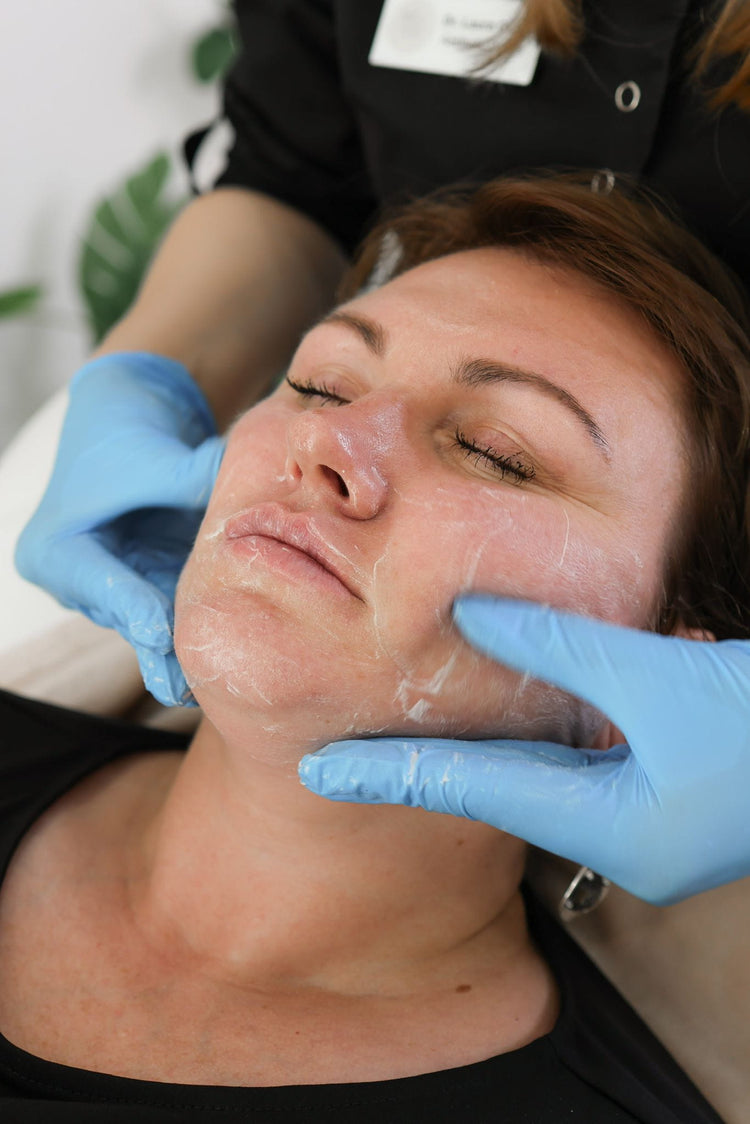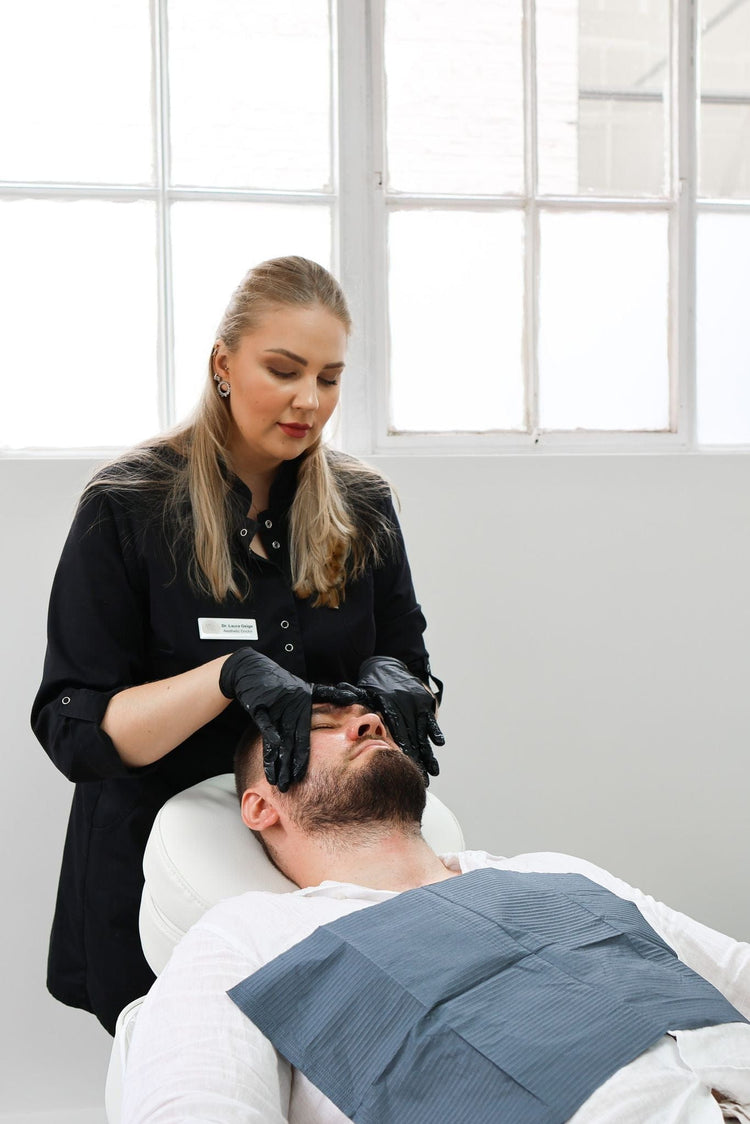Understanding Pigmentation Concerns
Pigmentation concerns, such as dark spots, sun damage, and melasma, can impact individuals’ self-esteem and confidence. Understanding the causes behind these discolorations is crucial for effective treatment. Skin treatment consultations provide a personalized approach to addressing pigmentation issues by evaluating individual skin types, identifying triggers, and recommending tailored solutions.
Causes of Hyperpigmentation

Hyperpigmentation refers to the darkening of patches of skin caused by an overproduction of melanin, the pigment responsible for skin color. Melanin is produced by cells called melanocytes in response to sun exposure, hormonal changes, inflammation, or certain medications.
Various factors can contribute to hyperpigmentation. Sun exposure is a major culprit, as ultraviolet (UV) radiation stimulates melanin production. Hormonal fluctuations during pregnancy or conditions like polycystic ovary syndrome (PCOS) can also trigger pigmentation changes. Inflammation from acne, eczema, or other skin injuries can lead to post-inflammatory hyperpigmentation. Some medications, including certain antibiotics and birth control pills, may have hyperpigmentation as a side effect.
Types of Pigmentation Disorders: Melasma vs. Other Forms
Melasma is a specific type of hyperpigmentation that typically appears on the face, particularly on the cheeks, forehead, bridge of the nose, and upper lip. It is characterized by brown or grayish-brown patches that often develop symmetrically. Melasma is primarily triggered by sun exposure, hormonal changes (especially during pregnancy), and genetics.
While melasma shares similarities with other forms of hyperpigmentation, there are distinct differences. Freckles are smaller, lighter brown spots that are generally present from childhood and tend to become more prominent with sun exposure. Age spots (liver spots) appear as flat, dark brown or black patches that develop over time due to accumulated sun damage.
Post-inflammatory hyperpigmentation occurs after skin inflammation, such as acne breakouts, eczema flares, or skin injuries. These darker patches fade gradually over time but can persist for several months or even longer.
Consultation Process
Pigmentation concerns, including dark spots, sun damage, and melasma, can significantly impact an individual’s self-perception. Effective treatment begins with a thorough understanding of the underlying causes behind these discolorations. Skin treatment consultations offer a personalized approach to addressing pigmentation issues by carefully evaluating individual skin types, identifying contributing factors, and recommending tailored solutions.

Initial Assessment: Medical History and Skin Examination
The initial consultation for pigmentation concerns like dark spots, sun damage, or melasma involves a comprehensive assessment beginning with a detailed medical history.
This discussion explores relevant factors such as sun exposure habits, family history of pigmentation issues, existing skin conditions, medications, and recent changes in hormonal status. Following the medical history review, a thorough skin examination is conducted. This visual evaluation allows the clinician to assess the type, size, location, and characteristics of the pigmentation concerns.
The examination may include using a dermatoscope to magnify skin lesions and better visualize their structure.
Detailed Discussion: Patient Concerns and Goals
During the consultation, patients are encouraged to openly discuss their concerns and goals regarding their pigmentation. Patients may express desires to reduce the appearance of dark spots, even out skin tone, or minimize melasma patches.
Understanding the patient’s aesthetic aspirations is crucial for developing a treatment plan that aligns with their expectations.
The clinician will explain various treatment options available, outlining the potential benefits and limitations of each approach. This may include topical medications like creams or serums containing ingredients such as hydroquinone, kojic acid, or vitamin C, chemical peels, laser therapy, microneedling, or a combination of these methods.
The clinician will recommend a treatment plan tailored to the patient’s individual skin type, the severity and location of pigmentation concerns, and their desired outcomes. They will also discuss realistic expectations regarding treatment duration, potential side effects, and the need for follow-up appointments.
Identifying Triggers and Risk Factors
A consultation process for addressing pigmentation and melasma begins with a detailed discussion about the patient’s medical history. This involves exploring factors like sun exposure habits, family history of pigmentation issues, existing skin conditions, medications, and recent hormonal changes. A thorough skin examination follows, assessing the type, size, location, and characteristics of the pigmentation concerns. A dermatoscope may be used to magnify skin lesions for a closer look.
During this process, patients are encouraged to openly discuss their concerns and aesthetic goals regarding their pigmentation. Understanding these aspirations is crucial for developing a treatment plan that aligns with the patient’s expectations.
The clinician then explains various treatment options available, outlining the potential benefits and limitations of each approach. These may include topical medications like creams or serums containing ingredients such as hydroquinone, kojic acid, or vitamin C, chemical peels, laser therapy, microneedling, or a combination of these methods.
Ultimately, the clinician will recommend a personalized treatment plan tailored to the individual’s skin type, the severity and location of pigmentation concerns, and their desired outcomes. They will also discuss realistic expectations regarding treatment duration, potential side effects, and the need for follow-up appointments.
Treatment Options
Effective treatment for pigmentation concerns like dark spots, sun damage, and melasma begins with a personalized approach offered through skin treatment consultations. These consultations involve a detailed evaluation of individual skin types, a comprehensive review of medical history including sun exposure habits, family history, medications, and hormonal status, and a thorough skin examination to assess the type, size, location, and characteristics of pigmentation issues.
Chemical Peels
During a consultation for pigmentation concerns such as dark spots, sun damage, or melasma, various treatment options are discussed.
- Topical Medications: Creams or serums containing ingredients like hydroquinone, kojic acid, or vitamin C can be prescribed to lighten pigmented areas.
- Chemical Peels: These procedures use a chemical solution to remove the top layers of skin, revealing brighter, more even-toned skin beneath.
- Laser Therapy: Targeted laser beams can break down melanin clusters, reducing pigmentation.
- Microneedling: Tiny needles create controlled punctures in the skin, stimulating collagen production and promoting cell turnover, which can help fade pigmentation.
Topical Medications: Creams, Serums, and Sunscreens
Effective treatment for pigmentation concerns like dark spots, sun damage, and melasma begins with a personalized approach offered through skin treatment consultations. These consultations involve a detailed evaluation of individual skin types, a comprehensive review of medical history including sun exposure habits, family history, medications, and hormonal status, and a thorough skin examination to assess the type, size, location, and characteristics of pigmentation issues.
During a consultation for pigmentation concerns such as dark spots, sun damage, or melasma, various treatment options are discussed.
- Topical Medications: Creams or serums containing ingredients like hydroquinone, kojic acid, or vitamin C can be prescribed to lighten pigmented areas.
- Chemical Peels: These procedures use a chemical solution to remove the top layers of skin, revealing brighter, more even-toned skin beneath.
- Laser Therapy: Targeted laser beams can break down melanin clusters, reducing pigmentation.
- Microneedling: Tiny needles create controlled punctures in the skin, stimulating collagen production and promoting cell turnover, which can help fade pigmentation.
Laser Therapy
Laser therapy is a popular treatment option for pigmentation concerns like sun damage, melasma, and dark spots.
It works by targeting melanin in the skin with concentrated light energy. The laser breaks down these pigment clusters, allowing them to be naturally absorbed and eliminated by the body.
Different types of lasers are used for pigmentation treatments, each tailored to specific skin tones and concerns. Some common types include:
- Q-switched lasers: These lasers emit short pulses of energy that effectively break down melanin in darker pigmentation.
- Ruby lasers: These lasers target superficial pigmentation, making them suitable for treating freckles and lighter sun spots.
- IPL (Intense Pulsed Light) therapy: IPL uses a broad spectrum of light wavelengths to target multiple pigments simultaneously, often used for melasma and large areas of hyperpigmentation.
It’s important to note that laser therapy requires multiple sessions to achieve optimal results as melanin production is an ongoing process.
Microdermabrasion
Microdermabrasion is a non-invasive skin resurfacing treatment that exfoliates the outermost layer of skin using fine crystals or a diamond-tipped wand.
This process removes dead skin cells, unclogs pores, and stimulates cell turnover, leading to brighter, smoother skin.
While microdermabrasion is not typically the primary treatment for pigmentation concerns like melasma, it can be used as an adjuvant therapy to enhance the effectiveness of other treatments or to improve overall skin texture.
Microneedling
Microneedling is a minimally invasive procedure that involves using tiny needles to create controlled punctures in the skin. These micro-injuries stimulate the production of collagen and elastin, proteins that give skin its structure and elasticity.
This increased collagen synthesis can help improve skin texture, reduce the appearance of fine lines and wrinkles, and address pigmentation concerns such as sun spots, melasma, and acne scars.
During a microneedling treatment, a device with fine needles is gently rolled or stamped over the skin. The depth of needle penetration can be adjusted based on individual skin concerns and goals.
After the procedure, the skin may appear slightly red and sensitive for a few hours to a few days.
Microneedling is generally well-tolerated with minimal downtime. Multiple sessions are typically required to achieve optimal results, as collagen production takes time.
Other Therapies: LED Light Therapy, Dermaplaning
LED light therapy is a non-invasive treatment that utilizes specific wavelengths of light to target and address various skin concerns, including pigmentation.
There are different colors of LED light used for skincare, each with unique benefits:
- Blue Light: Effective in treating acne by targeting bacteria that contribute to breakouts.
- Red Light: Stimulates collagen production and improves skin elasticity, which can help reduce the appearance of fine lines and wrinkles.
- Yellow Light: May aid in reducing inflammation and redness, potentially benefiting conditions like rosacea.
- Green Light: Can target hyperpigmentation by inhibiting melanin production.
LED light therapy is generally considered safe with minimal side effects. It can be used alone or in conjunction with other treatments to enhance their effectiveness.
Dermaplaning is a manual exfoliation technique that involves using a specialized blade to gently scrape away the outermost layer of dead skin cells and vellus hair (peach fuzz).
This procedure reveals smoother, brighter skin by removing these superficial layers. While not a direct treatment for pigmentation, dermaplaning can help enhance the penetration of topical skincare products, potentially improving their effectiveness in addressing hyperpigmentation.
Post-Consultation Care Instructions
Following your skin treatment consultation, it’s essential to follow the provided post-consultation care instructions carefully to optimize your results and minimize any potential complications. These instructions will outline specific steps you need to take to protect your skin during the healing process and promote optimal outcomes. This may include recommendations regarding sun protection, skincare product usage, and any necessary follow-up appointments.
Home Skincare Routine Recommendations
Post-consultation care instructions are crucial for maximizing the effectiveness of your pigmentation treatment and ensuring proper healing. Your clinician will provide personalized recommendations tailored to your specific treatment plan.
Here are some general guidelines to follow:
Sun Protection:
Sun exposure is a major trigger for pigmentation, so diligent sun protection is essential. Wear broad-spectrum sunscreen with an SPF of 30 or higher daily, even on cloudy days. Reapply every two hours, especially after sweating or swimming.
Topical Medications:
If prescribed topical medications, use them as directed by your clinician. Apply them gently to the affected areas and be aware that some medications may cause temporary skin sensitivity or dryness.
Skincare Routine:**
Maintain a gentle skincare routine focusing on hydration and avoiding harsh scrubs or exfoliants. Your clinician may recommend specific products based on your needs, such as those containing antioxidants (vitamin C) to protect against free radical damage or ingredients that promote collagen production.
Avoid Picking or Scratching:
Resist the urge to pick at any scabs or peeling skin, as this can lead to scarring and worsen pigmentation.
Follow-Up Appointments:
Attend all scheduled follow-up appointments to monitor your progress and make any necessary adjustments to your treatment plan.
Sun Protection Measures
Post-consultation care instructions are crucial for maximizing the effectiveness of your pigmentation treatment and ensuring proper healing. Your clinician will provide personalized recommendations tailored to your specific treatment plan.
Here are some general guidelines to follow:
Sun Protection:
Sun exposure is a major trigger for pigmentation, so diligent sun protection is essential. Wear broad-spectrum sunscreen with an SPF of 30 or higher daily, even on cloudy days. Reapply every two hours, especially after sweating or swimming.
Topical Medications:
If prescribed topical medications, use them as directed by your clinician. Apply them gently to the affected areas and be aware that some medications may cause temporary skin sensitivity or dryness.
Skincare Routine:**
Maintain a gentle skincare routine focusing on hydration and avoiding harsh scrubs or exfoliants. Your clinician may recommend specific products based on your needs, such as those containing antioxidants (vitamin C) to protect against free radical damage or ingredients that promote collagen production.
Avoid Picking or Scratching:
Resist the urge to pick at any scabs or peeling skin, as this can lead to scarring and worsen pigmentation.
Follow-Up Appointments:
Attend all scheduled follow-up appointments to monitor your progress and make any necessary adjustments to your treatment plan.
Follow-Up Appointments for Monitoring and Adjustment
Post-consultation care instructions are essential for maximizing the effectiveness of your pigmentation treatment and ensuring proper healing. Your clinician will provide personalized recommendations tailored to your specific treatment plan.
Here are some general guidelines:
* **Sun Protection:** Sun exposure is a major trigger for pigmentation, so diligent sun protection is crucial. Wear broad-spectrum sunscreen with an SPF of 30 or higher daily, even on cloudy days. Reapply every two hours, especially after sweating or swimming.
* **Topical Medications:** If prescribed topical medications, use them as directed by your clinician. Apply them gently to the affected areas and be aware that some medications may cause temporary skin sensitivity or dryness.
* **Skincare Routine:** Maintain a gentle skincare routine focusing on hydration and avoiding harsh scrubs or exfoliants. Your clinician may recommend specific products based on your needs, such as those containing antioxidants (vitamin C) to protect against free radical damage or ingredients that promote collagen production.
* **Avoid Picking or Scratching:** Resist the urge to pick at any scabs or peeling skin, as this can lead to scarring and worsen pigmentation.
* **Follow-Up Appointments:** Attend all scheduled follow-up appointments to monitor your progress and make any necessary adjustments to your treatment plan.
Remember that individual healing times and response to treatments can vary. Be patient and consistent with your post-consultation care routine to achieve optimal results.
Enquire about improving your skin texture at It’s Me & You Clinic with Dr. Laura Geige
- Can CBD Gummy Sweets Help With Fatigue And Energy Levels - September 16, 2025
- Brow Lift Treatment Near Croydon, Surrey - September 15, 2025
- Botox For Tired Eyes In Pirbright, Surrey - September 13, 2025
